The 19th RoboCup (Robot World Cup) and its affiliated academic conference opened in Hefei on July 19, 2015. Zhang Shlin,Vice-president of the University of Science and Technology of China attended the opening ceremony. From July 19th to 23rd, a total of more than 3,000 representatives of more than 300 teams from China, the United States, Japan and other 44 countries and regions, are dedicated to a wonderful feast of science and technology in a series of fierce competitions.

As one of the host, The WrightEagle team of USTC won two champion titles and a runner-up in this competition: the "KeJia low-cost mobile platform" won the champion of professional group of service robots for accurate test, the football team won the champion of 2D simulation group, and the service robot " KeJia " won the runner-up of the home service project.
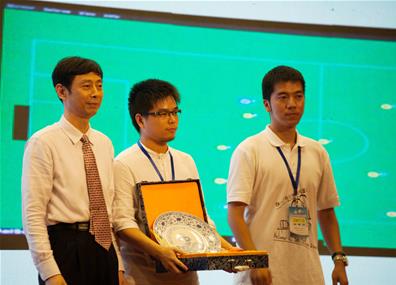
The first title of this competition, the champion of the profess-ional group for accurate test went to USTC’s "KeJia low-cost mobile platform", on July 22nd a.m. Accurate test program is set to be a competition for the first time in this year's World Cup and also the first event to limit the hardware cost of the robot in robot World Cup history, requiring the cost of the mobile platform control and perceiving systems to be ¥15,000 RMB or less. "KeJia low-cost mobile platform", with a load weight of 40 kg, were still able to cross a three centimeters high threshold and autonomously avoid obstacles. To score 20 points higher than the second in total score, he was the project champion.
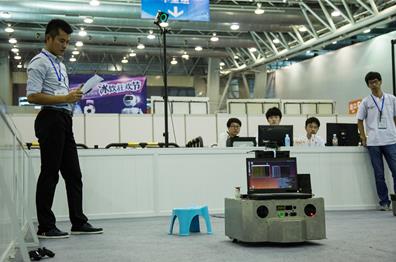
With a 4: 0 victory over Japanese team Helios, USTC WrightEagle robot soccer team won the 19th RoboCup 2D simulation champion. This is the third consecutive year the WrightEagle robot soccer team won the world champion of the project.
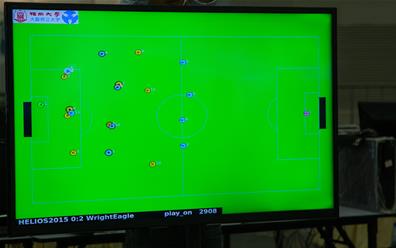
In the final of the home service project, two "KeJia" robots were ready to perform the Chinese tea ceremony. This required not only the real-time 3D modeling of the surrounding environment so as to accomplish very fine movements as humans do, but also the ability of team planning. Due to network failure, "KeJia" ended up with the runner-up, 8-point lost to the German team Homer.
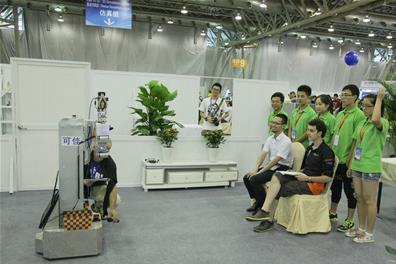
Other professional group competition results are as follows: In the standard platform group final, the University of New South Wales, Australia, took 3 to 1 victory over the University of Bremen, Germany, won the championship. In the small humanoid robot group final, Zhejiang University ZJU Dancer lost 0: 1 to Japanese Team CIT Brains Kid, finished second. In the small robot group final, Carnegie - Mellon University from United States won the championship. In the medium-sized robot group final, Beijing Information Science and Technology’s Team water won the championship in a 4: 1 victory over the Netherlands, Eindhoven University of Technology.
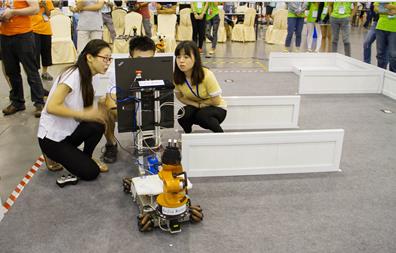
The WrightEagle team of USTC became the first team from China ever to enter the RoboCup in 2000, has so far won 12 world titles and 12 runner-ups. It is one of the leaders in this field. This tournament, led by the USTC, united with Carnegie Mellon University, National University of Singapore and other universities abroad, first introduced the accurate test and low-cost mobile platform for service robot. This marks the robot research of USTC are advancing from "catching up with world’s advanced level" to a new stage of "leading the world". It is reported that the 20th RoboCup will be held in 2016 in Leipzig, Germany.

On July 16th, prior to the RoboCup and its academic conference, USTC Robotics Center’s Academic Committee held its first meeting. Chairman of the Committee, Professor of Carnegie Mellon University, Chinese Academy of Sciences Einstein Professor Manuela Veloso, members of the Committee, the highest international Young Scientist Prize winner in AI, professor at the University of Texas at Austin Peter Stone, Nanjing University Professor Zhihua Zhou, the CAS Shenyang Institute of Automation Researcher Jianda, Han Shanghai Jiaotong University Professor Chengliang Liu attended the meeting. USTC President Lijun Wan addressed the meeting, and presented letters of appointment to the Members Council. Minister of Scientific Research Department Xisheng Luo and party government office director Tianzhuo Liu attended the meeting. Committee members spoke highly of the work of USTC Robotics Center, and made a number of valuable comments and suggestions for the future development of the center. The success of this meeting, are acting as a powerful support for the breakthroughs USTC robotic team made at the World Cup.
(WANG Lin, School of Computer Science and Technology)

